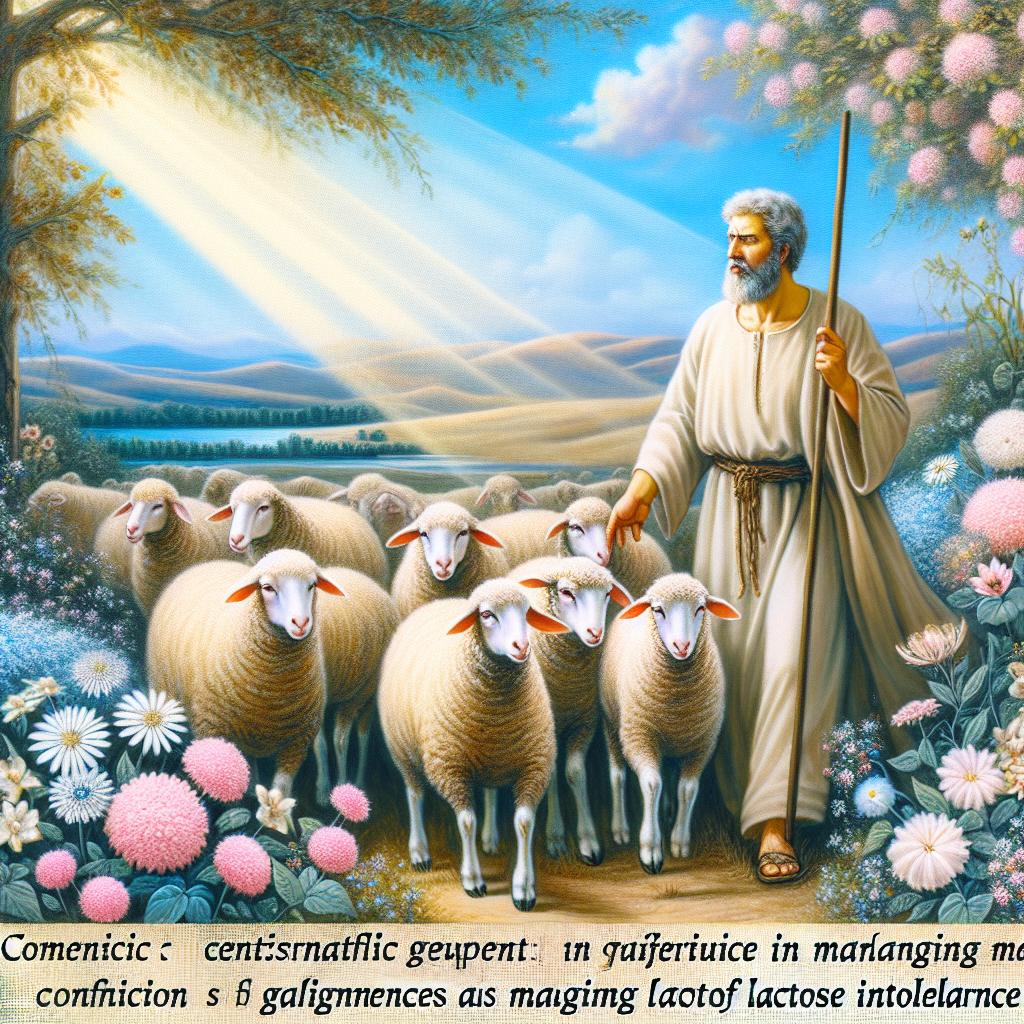
Divine Guidance for Managing Lactose Intolerance: Essential Tips for Christian Readers
Published: 28 May 2024
Lactose Intolerance: Understanding the Genetic Mutations and Biblical Perspective
Lactose intolerance is a common condition that affects a significant portion of the global population. People with lactose intolerance lack the enzyme lactase, which is responsible for breaking down the milk sugar lactose. As a result, they experience symptoms such as nausea, bloating, cramps, and diarrhea after consuming milk or dairy products. However, recent research has shed light on the genetic mutations that cause lactase persistence in certain individuals. In this comprehensive article, we will explore eight key questions related to lactose intolerance from a staunchly conservative, biblical perspective.
Question 1: What causes lactose intolerance in adults?
Lactose intolerance occurs when the gene for lactase switches off after children are weaned. This is the normal process in human development. However, some individuals retain the ability to produce lactase into adulthood due to a genetic mutation. These individuals are termed "lactase persistent" and can tolerate milk consumption without experiencing symptoms. The mutations that confer lactase persistence vary among different populations, such as northern Europeans and East Africans.
Question 2: How does this challenge evolutionary notions?
The discovery of lactase persistence mutations in different populations challenges previously held evolutionary beliefs. It was once thought that pale-skinned northern Europeans represented an evolutionary advancement because they retained full intestinal lactase activity into adulthood. In contrast, darker-skinned peoples were believed to lose the ability to digest milk after infancy or early childhood. However, research has shown that lactase persistence mutations exist in various African populations as well. This finding contradicts the notion that certain races are less evolved than others.
Question 3: Is this an example of evolution or selection?
The genetic changes that lead to lactase persistence are often referred to as examples of evolution. However, it is important to note that these changes are actually a loss of information. The normal switching-off mechanism of lactase production following weaning is disrupted by the mutations. Therefore, this is not an example of uphill evolution but rather a downhill change. It can be best described as a result of selection, where individuals with lactase persistence have a survival advantage in areas where milk is available.
Question 4: How does lactose intolerance relate to biblical history?
According to a biblical perspective, the mutation that allows lactase persistence likely arose after the Fall. The Bible does not mention milk consumption before the Flood, but references to dairy products appear later on, such as in the time of Abraham. The Promised Land is described as a land "flowing with milk and honey." Therefore, lactose intolerance can be seen as the original condition for humans, and individuals with lactase persistence can be considered "mutants" in this context.
Question 5: What are the advantages of lactase persistence mutations?
Although lactase persistence mutations represent a loss of information, they provide clear advantages in environments where milk is available. The ability to produce lactase beyond infancy allows individuals to extract energy and nutrients from milk safely. While there may be an extra energy cost associated with producing lactase, it is outweighed by the benefits of accessing the resources provided by milk. This advantageous mutation highlights the intricate design and adaptability found in God's creation.
Question 6: How can we apply this knowledge to our lives?
Understanding the genetic mutations associated with lactose intolerance can help individuals make informed dietary choices. Those who experience symptoms of lactose intolerance can find alternatives to milk that suit their bodies' needs. Additionally, recognizing the adaptability of the human body and the variations within different populations reminds us of the intricacies of God's creation. We can marvel at the diversity and flexibility designed into our genetic makeup.
Question 7: How does this challenge traditional evolutionary ideas?
The discovery that lactase persistence mutations exist in populations that were historically thought to lack this trait challenges traditional evolutionary ideas. It suggests that hunter-gatherer populations, such as the Hadza people of Tanzania, might have had ancestors who practiced animal husbandry or farming. This contradicts the notion that human societies always progressed from hunting and gathering to agriculture in a linear evolutionary manner. The evidence aligns more closely with a biblical perspective that acknowledges variations and changes within human populations.
Question 8: What does lactose intolerance teach us about God's design?
Lactose intolerance serves as a reminder that humans were originally created without the ability to digest milk beyond infancy. This natural limitation reflects God's intentional design for our bodies. While lactase persistence mutations may provide advantages in certain environments, they do not represent an evolutionary advancement. Instead, they demonstrate God's providence and adaptability within His creation.
In conclusion, understanding the genetic mutations behind lactose intolerance sheds light on the complexities of human biology from a biblical perspective. The presence of lactase persistence mutations challenges traditional evolutionary beliefs and highlights God's design and adaptability within His creation. By recognizing the original condition of lactose intolerance and appreciating the advantages and limitations of lactase persistence, we can gain a deeper understanding of God's intentional design for our bodies.
